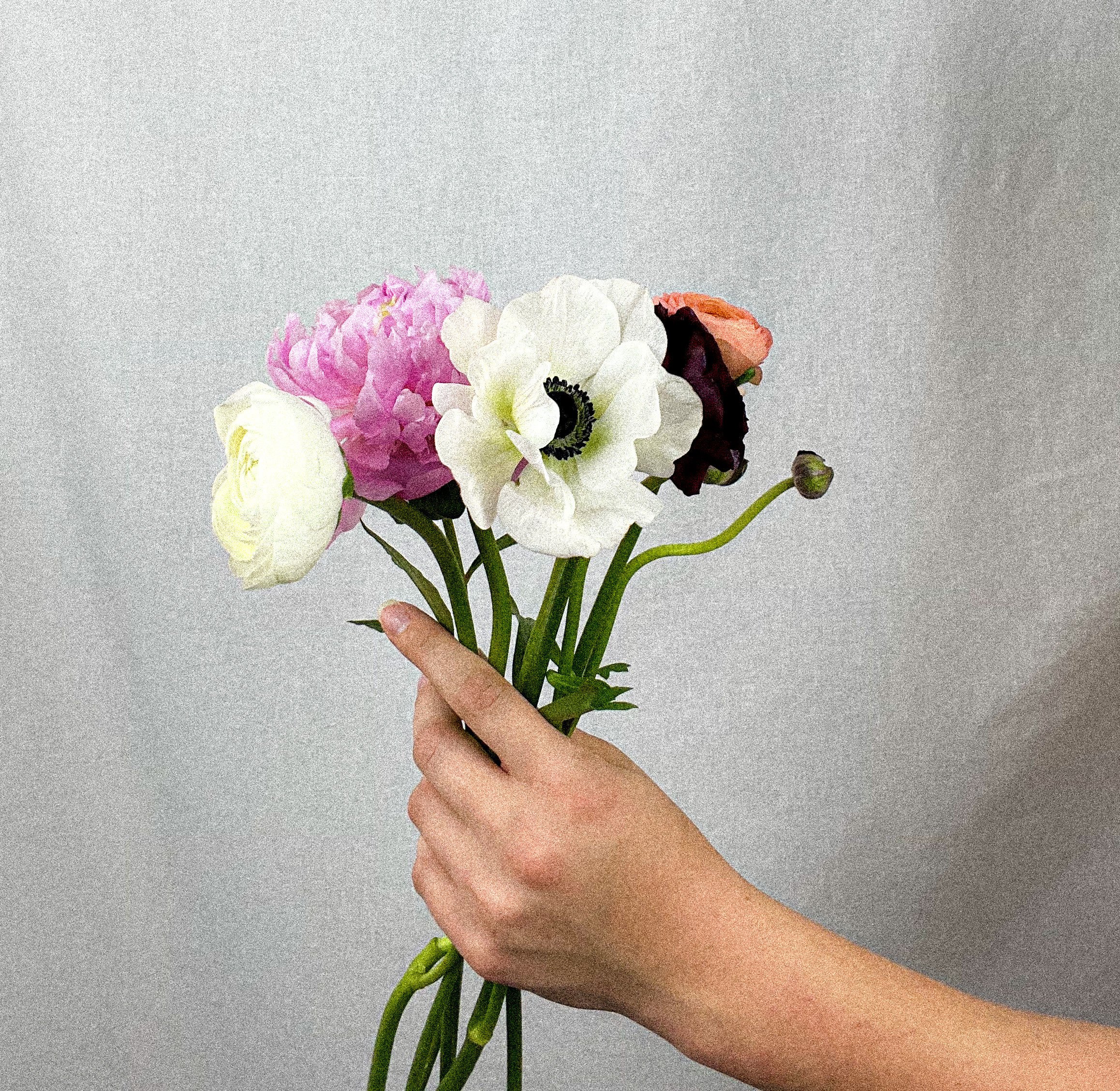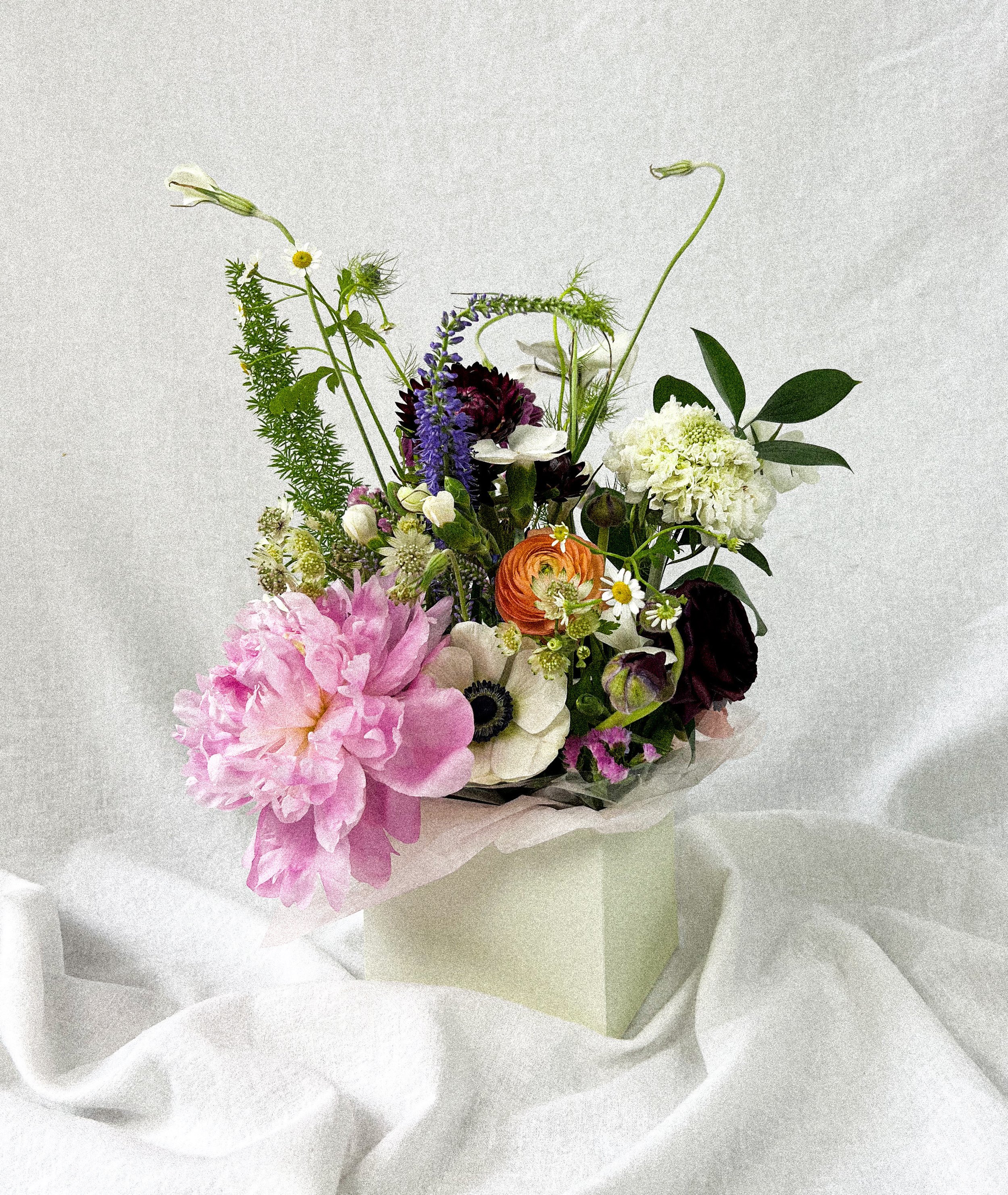Flower Care

IF YOU RECIEVED A BOUQUET
KEEP WATER FRESH. Use fresh, clean, and cold water every 1–2 days. This helps prevent bacteria growth and keeps your flowers healthy.
NO TRICKS — JUST WATER. Avoid adding sugar, aspirin, or other household remedies. Simply use clean water, and optionally mix in a small amount of flower food when changing the water.
TRIM FLOWERS. Every 1–2 days, trim 1 to 2 inches off the stems using sharp shears or a knife. This helps the flowers absorb water more effectively.
CLEAN THE VASE. We recommend using ceramic vases, as they don’t allow heat to warm the water as quickly as glass vases. Clean the vase each time you change the water—ideally every 1–2 days—using antibacterial soap if possible.
NO DIRECT SUNLIGHT. Keep flowers out of direct sunlight, as it can dry them out. Place them in a spot with indirect light instead.
KEEP THEM IN A COOL AREA. Keep flowers away from direct heat sources like radiators, appliances, or sunny windows. Place them in a cooler room if possible. Overnight, you can store them in the fridge or add ice cubes to the water—especially during hot summer days.
MIST WHEN NEEDED. Some blooms, like hydrangeas, benefit from gentle misting. Lightly spray the petals with water once or twice a day to keep them hydrated and prevent wilting—especially in warmer environments.
ENVIRONMENT. Flowers are sensitive. Keep them away from fruits and vegetables—ripening produce releases ethylene gas, which can cause flowers to wilt faster. Avoid placing them near gas stoves, strong odors, perfumes, or dusty areas, all of which can shorten their lifespan.
REMOVE WILTING FLOWERS . If a flower or greenery starts wilting, remove it promptly. There's no need to discard the entire bouquet. Removing wilted parts helps prevent the spread of bacteria and keeps the remaining flowers fresher for longer.

IF YOU RECEIVED A CERAMIC VASE ARRANGEMENT
FLUSH OUT WATER. To replace the water in a ceramic vase arrangement, simply place the vase in a sink or tub under a faucet. Locate an opening where water can flow freely without damaging the blooms—typically, the back of the arrangement has more greenery and fewer delicate flowers. Gently run water through this opening to flush out the old water completely.
MIST WHEN NEEDED. Some blooms, like hydrangeas, benefit from gentle misting. Lightly spray the petals with water once or twice a day to keep them hydrated and prevent wilting—especially in warmer environments.
KEEP WATER FRESH. Use fresh, clean, and cold water every 1–2 days. This helps prevent bacteria growth and keeps your flowers healthy.
NO TRICKS — JUST WATER. Avoid adding sugar, aspirin, or other household remedies. Simply use clean water, and optionally mix in a small amount of flower food when changing the water.
ENVIRONMENT. Flowers are sensitive. Keep them away from fruits and vegetables—ripening produce releases ethylene gas, which can cause flowers to wilt faster. Avoid placing them near gas stoves, strong odors, perfumes, or dusty areas, all of which can shorten their lifespan.
KEEP THEM IN A COOL AREA. Keep flowers away from direct heat sources like radiators, appliances, or sunny windows. Place them in a cooler room if possible. Overnight, you can store them in the fridge or add ice cubes to the water—especially during hot summer days.
NO DIRECT SUNLIGHT. Keep flowers out of direct sunlight, as it can dry them out. Place them in a spot with indirect light instead.
REMOVE WILTING FLOWERS . If a flower or greenery starts wilting, remove it promptly. There's no need to discard the entire bouquet. Removing wilted parts helps prevent the spread of bacteria and keeps the remaining flowers fresher for longer.

